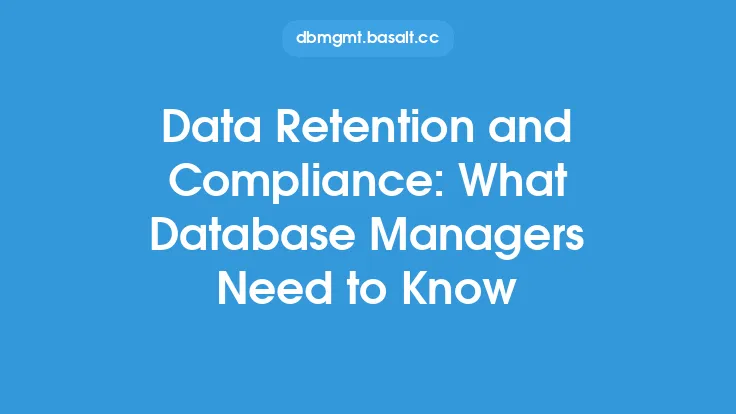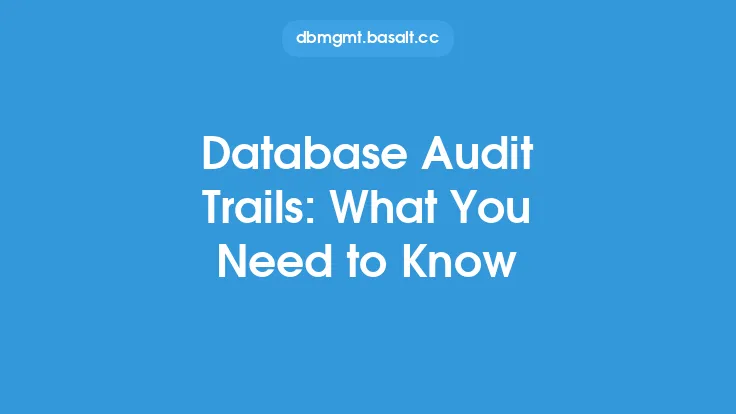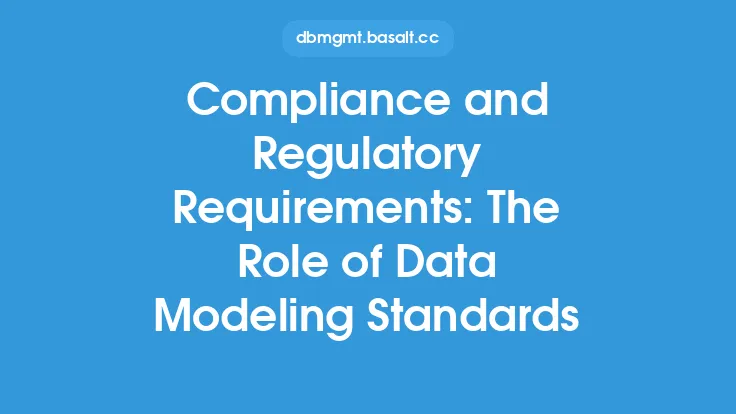The General Data Protection Regulation (GDPR) is a comprehensive data protection regulation in the European Union (EU) that came into effect on May 25, 2018. It aims to strengthen data protection for individuals within the EU and imposes strict regulations on organizations that collect, store, and process personal data of EU residents. As a result, database security has become a critical aspect of ensuring compliance with the GDPR. In this article, we will delve into the key aspects of database security and the GDPR, highlighting what organizations need to know to ensure they are meeting the necessary requirements.
Introduction to the GDPR
The GDPR is a regulation that applies to all organizations that collect, store, or process personal data of EU residents, regardless of the organization's location. The regulation introduces several key principles, including data minimization, accuracy, storage limitation, integrity, and confidentiality. Organizations must ensure that they are collecting and processing personal data in a lawful, fair, and transparent manner, and that they have implemented adequate measures to protect the data from unauthorized access, disclosure, or loss.
Key Database Security Requirements under the GDPR
The GDPR imposes several database security requirements on organizations, including:
- Data encryption: Organizations must implement encryption measures to protect personal data, both in transit and at rest.
- Access controls: Organizations must implement strict access controls, including multi-factor authentication, to ensure that only authorized personnel have access to personal data.
- Data backups: Organizations must implement regular data backups to ensure that personal data can be restored in the event of a data loss or corruption.
- Data anonymization: Organizations must consider anonymizing personal data to reduce the risk of identification.
- Data pseudonymization: Organizations must consider pseudonymizing personal data to reduce the risk of identification.
Database Security Measures to Ensure GDPR Compliance
To ensure GDPR compliance, organizations should implement several database security measures, including:
- Conducting regular security audits: Organizations should conduct regular security audits to identify vulnerabilities and weaknesses in their database security.
- Implementing a data breach response plan: Organizations should implement a data breach response plan to ensure that they can respond quickly and effectively in the event of a data breach.
- Providing training to personnel: Organizations should provide training to personnel on database security and the GDPR to ensure that they understand their roles and responsibilities in protecting personal data.
- Implementing incident response procedures: Organizations should implement incident response procedures to ensure that they can respond quickly and effectively in the event of a security incident.
Best Practices for Database Security and GDPR Compliance
To ensure database security and GDPR compliance, organizations should follow several best practices, including:
- Using secure protocols for data transmission: Organizations should use secure protocols, such as HTTPS, to protect personal data during transmission.
- Implementing secure password policies: Organizations should implement secure password policies, including multi-factor authentication, to protect access to personal data.
- Regularly updating and patching software: Organizations should regularly update and patch software to ensure that they have the latest security fixes and updates.
- Using encryption for data at rest: Organizations should use encryption to protect personal data at rest, including data stored on databases, file servers, and other storage devices.
GDPR Compliance and Database Security Technologies
Several database security technologies can help organizations achieve GDPR compliance, including:
- Database encryption: Database encryption technologies, such as transparent data encryption (TDE), can help protect personal data at rest.
- Data masking: Data masking technologies can help protect personal data by masking sensitive information, such as credit card numbers or social security numbers.
- Access control systems: Access control systems, such as role-based access control (RBAC), can help ensure that only authorized personnel have access to personal data.
- Intrusion detection and prevention systems: Intrusion detection and prevention systems (IDPS) can help detect and prevent unauthorized access to personal data.
Conclusion
In conclusion, database security is a critical aspect of ensuring compliance with the GDPR. Organizations must implement robust database security measures, including data encryption, access controls, and data backups, to protect personal data from unauthorized access, disclosure, or loss. By following best practices and using database security technologies, organizations can help ensure GDPR compliance and protect the personal data of EU residents. It is essential for organizations to stay informed about the latest developments and updates to the GDPR and to regularly review and update their database security measures to ensure ongoing compliance.





